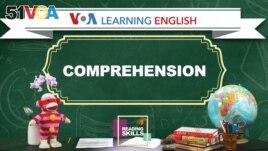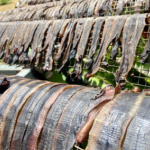29 August 2023
When talking about literacy, comprehension means understanding what we read. On the website Reading Rockets, literacy experts say: "To be able to accurately understand written material, children need to be able to (1) decode what they read; (2) make connections between what they read and what they already know; and (3) think deeply about what they have read."
Strategies for comprehension
Ways of teaching are sometimes called strategies. Comprehension strategies should do some of the following:

Early Literacy: Comprehension
- Teach students what they understand and what they do not.
- Teach the structure of a story – beginning, middle, and end.
- Teach students to re-tell a story or parts of a story.
- Teach students to ask questions about a text.
- Use visual organizers such as Word Walls and Story Maps.
Experts at Reading Rockets say teachers can show students the following skills:
- How to guess what is going to happen in a story.
- How to re-tell a story in their own words.
- How to use new lesson words often and in different ways.
- How to ask themselves questions about a text as they read.
These experts also suggest ways students can help themselves:
- A child can use visual aids such as outlines and maps.
- They can read with a friend and take turns summarizing.
- As they read, they can ask themselves questions about it.
- They can make mental pictures of the story. This strategy is called visualization or a "mind movie."
Parents can talk about words, stories, and books with their children. Parents can also make connections between a child's experiences and what they read in a book.
Strategy: Story Map (a visual aid)
Story maps allow students to learn the story in a visual way. Students must read carefully to fill in the map. Story maps also may be used for math, social studies, and science.
There are different types of story maps. The most basic ones focus on the beginning, the middle, and the end of the story. More advanced story maps are about other story elements, such as:
- characters
- setting
- problem
- solution
Strategy: Active Reading
As you read a book to a child, talk about the story. This strategy turns a book into a lively conversation. Do not stop too much. If you do, the students may not understand the story. Keep it fun.
Ask questions about the story. This will help the child get more involved in the story. For early learners, ask easy questions. You can point to a picture in the book and ask, "What is this?" For more advanced learners, you can ask more difficult questions. For example, "What does this character want?"
When a student answers, give them feedback. "That's right! The character is sad because he is lost." Add to what the student said. "I was lost one time. And I felt really scared."
Strategy: Sequence
Putting events in the correct order (or sequence) is a great way to understand a story.
Why teach sequencing?
- It helps students of all levels to organize information. With beginning learners, you can use pictures too.
- It teaches the structure of a story: beginning, middle, and end.
- This strategy also tests a student's ability to re-tell a story in order or to summarize it.
This strategy can be used with many kinds of writing. Students can sequence parts of a story or lines from a song or a poem. They can even sequence everyday activities - a math problem, or a recipe for making their favorite dish. Simply write or draw the text of a story or steps in a process. Then have students put the steps in order.
Assessment for comprehension
There are many types of reading comprehension assessments. Generally speaking, if a learner cannot do the following, they may have a problem with comprehension.
- They cannot tell you the main idea.
- They cannot describe the characters or setting.
- They cannot explain a character's thoughts or feelings.
- They cannot connect a story to real life.
- They can tell you what happened in a story but not why.
- They cannot re-tell the story in their own words.
- They cannot tell the events of the story in order.
Apart from testing and assessment, experts suggest that teachers, parents, and caregivers should pay attention to the skills of describing, explaining, and connecting while reading with a child.
Experts add that adults should pay attention to what a child says. Comprehension may be a problem if a child says, "I couldn't follow the story," or simply, "I don't get it!"
Use these tips, strategies, and assessment methods that best serve you and your learners. Change them to fit your students and teaching situation.
I'm Anna Matteo.
And I'm Caty Weaver.
Anna Matteo wrote this article for VOA Learning English. It is part of a larger collection of Early Literacy Materials.
_
Words in This Story
decode –v. to understand the hidden meaning of something
summarize – v. to express or cover the main points briefly
visualize – v. to see or form a mental image of
sequence – v. to arrange in an order
recipe – n. a set of instructions for making something from various ingredients
character – n. someone who appears in a book, movie; a representation of an individual personality in a fictional or dramatic work












